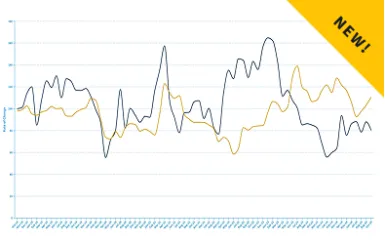EPA Announces Tougher New Vehicle Standards
In the concluding days of 2021, the U.S. Environment Protection Agency (EPA) announced tougher new vehicle emission requirements. The final rule on emissions standards for light-duty vehicles impacts model years 2023 through 2026 and will become effective on February 28, 2022. The revised standards set strict emissions limits on new passenger cars and trucks and pave the way for a more pronounced transition to electric vehicles.
These strict emissions targets are the culmination of new EPA targets, President Biden’s “Strengthening American Leadership in Clean Cars and Trucks” Executive Order, and increased pressure from state governments and environmental groups. The emissions targets become more rigorous with each model year, as the Biden Administration focuses on reducing tailpipe emissions from the country’s vehicle fleet.
The final rule assigns different emission targets to light-duty cars and trucks, noting that these two types of vehicles have different uses and that trucks typically emit more carbon with larger, more powerful engines. The final target for MY2026 seeks a fleetwide total (both cars and trucks) of no more than 161 grams/mile of CO2. This is equivalent to an EPA estimated Real
World Label Value of 40 miles per gallon combined. These new standards will replace an existing set of standards that only look to achieve an emissions target of 32 miles per gallon by MY2026.
Because the final emissions standards are tighter than those originally proposed by the agency, the EPA estimates that the new standards will reduce total greenhouse gas emissions by 3.1 billion tons by 2050.
The EPA notes that these targets will be costly, with projected expenses near $180 billion, but adds that the total benefits “would far exceed” the cost of the program. EPA indicates that fuel savings, climate benefits, and fewer fuel taxes paid are estimated to result in fewer total costs for consumers. These emissions standards are now final, with automakers working hard toward compliance within a short timeframe.
John Bozzella, President and CEO of the Alliance for Automotive Innovation, made the following statement regarding the EPA’s final rule:
“The auto industry continues to make significant progress improving fuel economy and reducing GHG emissions and is investing $330 billion in electrification by 2025. While the challenge before us is great, we are committed to achieving a cleaner, safer, and smarter future. EPA’s final rule for greenhouse gas emissions is even more aggressive than originally proposed, requiring a substantial increase in electric vehicle sales, well above the four percent of all light-duty sales today. Achieving the goals of this final rule will undoubtedly require enactment of supportive governmental policies – including consumer incentives, substantial infrastructure growth, fleet requirements, and support for U.S. manufacturing and supply chain development. Collaboration between industries across the economy and government will be essential to achieving our shared goals for a cleaner transportation future that benefits all communities and enhances U.S. economic competitiveness.”
For more information, please see EPA’s revised fact sheet or contact Chris Bornemann, RV Industry Association Director of Federal Affairs at cbornemann@rvia.org.
Please Sign in to View
Log in to view member-only content.
If you believe you are receiving this message in error contact us at memberservices@rvia.org.

